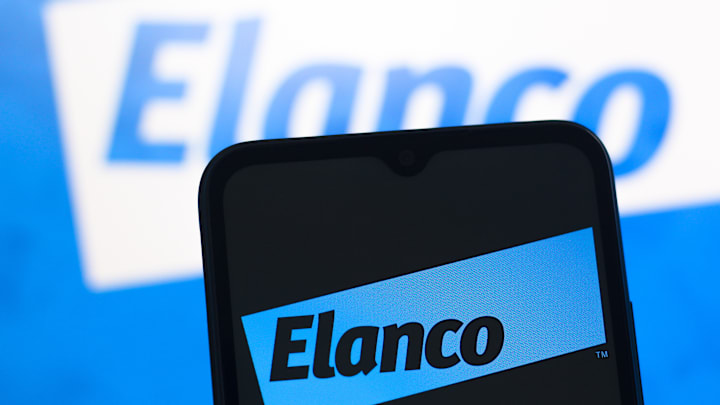May is Inflammation Awareness Month, to raise awareness for keeping dogs healthy and reducing the development of inflammation-causing conditions like Canine Osteoarthritis (OA) that can cause discomfort and pain for your dog. But just because May ends, it doesn't mean that awareness for inflammation and Canine OA should end as well.
After all, dogs are developing Canine OA every day. But the animal health professionals at Elanco Animal Health want to make sure that dog owners know what Canine OA is, regardless of the time of year. Dr. Tannetje Crocker, a spokesperson and Canine OA expert for Elanco Animal Health, was kind enough to answer a few questions about Canine OA to help raise awareness for dog owners, particularly owners of aging dogs.
What is Canine Osteoarthritis?
Canine OA is a chronic and progressive joint disease that affects dogs as they age. It's a degenerative condition that can cause dogs to lose their joint cartilage, which can cause pain, inflammation, and difficulty using the affected limbs.
Several conditions that affect the joints can lead to the development of Canine OA, including:
- Cranial cruciate ligament (CCL) damage
- Hip and elbow dysplasia
- Patella luxation
- Previous fractures
- Repetitive high-impact activities (especially in athletic breeds)
However, in some cases, there is no obvious underlying cause. Obesity can also worsen the effects of Canine OA by putting more pressure on the joints.
What age of dogs does Canine OA most commonly affect?
According to Dr. Crocker:
"Canine Osteoarthritis (OA) can affect dogs at any age, though it is perhaps most noticed in older dogs. According to the FDA, over 20% of adult dogs struggle with OA, and that number increases to 80% as they age into their twilight years. The chronic pain dogs experience from joint inflammation can go beyond simple discomfort and cause significant problems for quality-of-life. Recognizing the early symptoms of OA can make a major difference in treating them. OA can be ranked in severity from Stage One to Stage Four, and the earlier it is found, the more veterinary clinicians can do to help."
It is important for dog owners to understand the warning signs of Canine OA, especially if your dog already has an underlying joint condition. Even if your dog is just a puppy, early checkups and knowing whether your dog's breed is prone to certain joint conditions are important for getting ahead of the potential development of Canine OA.
What are common warning signs of Canine OA?
There are many potential warning signs of Canine OA. Some of the most common are:
- Abnormalities in posture or gait
- Decrease in overall activity
- Difficulty getting up
- Difficulty jumping and climbing stairs
- Lameness
- Limping
- Pain from moving their joints
- Problems positioning themselves when going to the bathroom
- Reluctance to exercise
- Shaking or trembling in their legs
- Stiffness
- Struggling to get up after lying down
Dr. Crocker also says to look out for "bunny hopping" (using both hind legs at once to move forward – especially going up or down stairs) and "significant hip swaying or butt wiggling while walking", which is commonly associated with hip dysplasia and can cause OA in a dog’s hip joints.
How is Canine OA treated, and how can dog owners reduce the risk of their dog developing OA?
To treat or reduce the risk of developing Canine OA, veterinarians usually recommend a combination of lifestyle changes and treatments.
For lifestyle changes dog owners can control their dog's exercise more, including providing ramps and stairs to reduce jumping. Therapies such as acupuncture, massages, and laser surgery can also help as well as exercise and rehabilitation such as swimming can also help significantly.
Changes to a dog's diet can also help treat Canine OA, such as losing weight and adding supplements to the diet such as omega-3 fatty acids and glucosamine. There are even prescription dog foods available for joint health.
Another treatment for Canine OA is Galliprant, a treatment stocked by more vet clinics in the U.S. than any other brand-name NSAID. Studies have shown that Galliprant significantly improves mobility, comfort, and overall quality of life in dogs with OA.
According to Dr. Crocker:
"Osteoarthritis can be a painful condition for dogs of all ages, but the good news is it can be managed. Early intervention with proven effective treatments, like Galliprant, can help dogs with any stage of OA live their best life.
- Galliprant is a daily chewable NSAID (non-steroidal anti-inflammatory drug) that specifically targets the source of dog joint pain – inflammation.
- It can help manage joint pain and inflammation without tradeoffs, like impacting organ health, though monitoring your dog is always recommended for long-term use.
- Unlike most other options available, Galliprant is the only FDA-approved OA treatment that controls pain and inflammation without disrupting production of prostaglandins – hormone-like compounds – which veterinarians know are important for organ health."
Even though May is Inflammation Awareness Month, it's important to be aware of the warning signs of Canine OA year-round. Catching Canine OA early and taking steps to reduce the risk when your dog us young can help reduce the chances of them developing Canine OA as they age.
Regular checkups with a veterinarian can also help you get ahead of any joint conditions that could make your dog more prone to developing Canine OA. It is important to work with a veterinarian to determine your dog's risk and any treatments that may be available.
